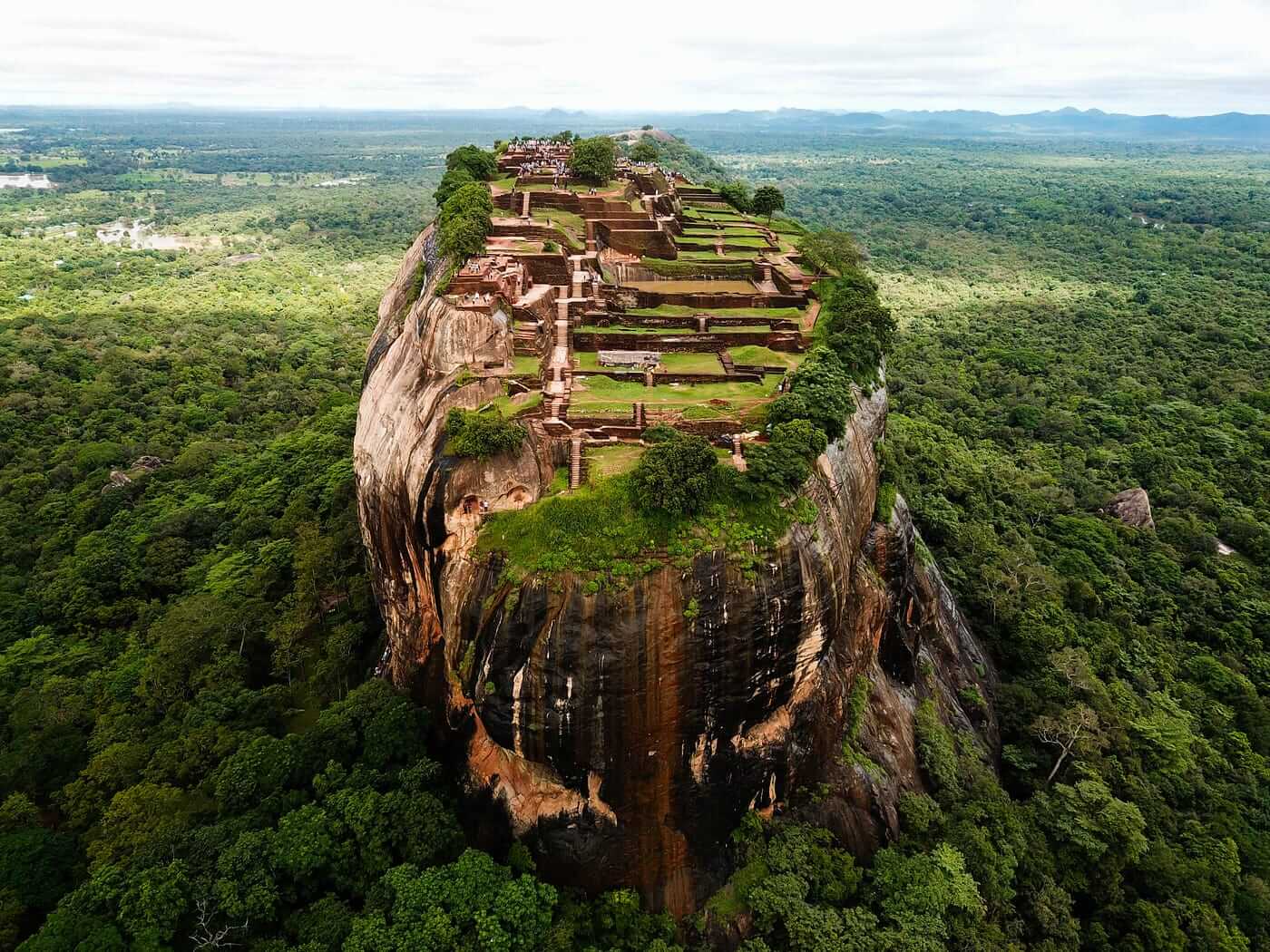Laxapana Falls
The Laxapana Falls, one of Sri Lanka’s most stunning natural wonders, cascades gracefully from a height of 126 meters, making…
View Details
Nestled in the heart of the lush Sri Lankan countryside, the Sigiriya Rock Fortress stands as a testament to ancient ingenuity and architectural prowess. Often referred to as the “Eighth Wonder of the World,” this remarkable UNESCO World Heritage Site is not just a rock; it’s a historical treasure, a unique blend of art and engineering, and a must-visit destination for travellers exploring the wonders of Sri Lanka. In this guide, we’ll take you on a journey through the fascinating history, the awe-inspiring ascent, and the breathtaking views that await you at the summit of Sigiriya Rock Fortress.
Sigiriya, also known as the Lion Rock, is steeped in history, and its origins date back to the 5th century. The rock served as the mountaintop fortress and palace of King Kasyapa, who ruled the region during that era. With a vision to create an impregnable stronghold and an opulent residence, King Kasyapa ordered the construction of an architectural marvel on the summit of Sigiriya.
The focal point of the fortress is the colossal stone lion that once guarded the entrance. Although now in ruins, the “Lion Gate” is a testament to the engineering feats of the time and the grandeur that once defined Sigiriya.
The complex also features remarkable frescoes that depict the “Sigiriya Damsels,” which are considered some of the earliest surviving examples of ancient Sri Lankan art. The gardens surrounding the rock showcase the hydraulic engineering prowess of the time, with complex water gardens, fountains, and pools that add to the site’s mystical charm.
The ascent to the summit of Sigiriya Rock Fortress is a memorable journey filled with historical significance and breathtaking vistas. As you climb the steep staircases and pathways, you’ll encounter ancient graffiti, mirror walls adorned with verses, and stone-carved motifs, each adding to the sense of adventure and discovery.
The climax of the ascent takes you to the flattened summit, where the ruins of King Kasyapa’s palace and citadel still stand. From this vantage point, you’ll be rewarded with panoramic views of the surrounding countryside, lush forests, and the distant horizon.
Before you embark on your journey to Sigiriya Rock Fortress, consider the following practical details:
Visiting Sigiriya Rock Fortress is not just a physical journey; it’s a captivating expedition through history and nature. It’s an opportunity to witness the grandeur of ancient Sri Lankan civilization, the marvels of architectural and artistic achievements, and the breathtaking beauty of the island’s natural landscapes. Whether you’re an adventurer, a history enthusiast, or simply a traveller in search of incredible vistas, Sigiriya Rock Fortress promises an unforgettable experience and a deeper understanding of the cultural heritage of Sri Lanka.